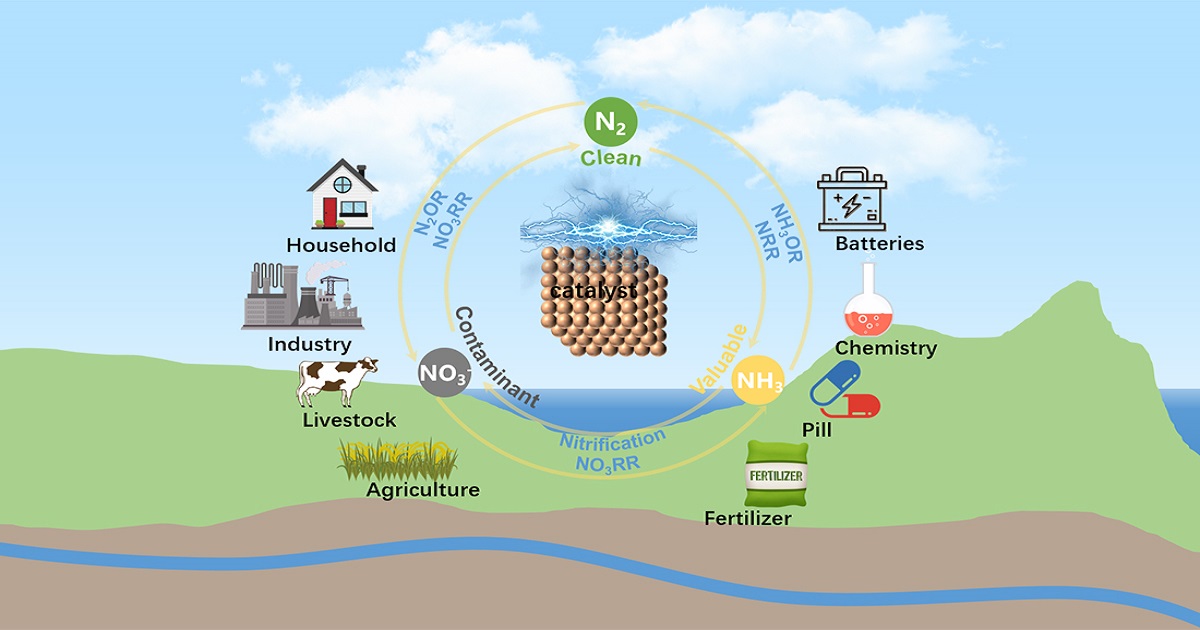Electrocatalytic Nitrogen-Cycle
A special issue of Catalysts (ISSN 2073-4344). This special issue belongs to the section "Electrocatalysis".
Deadline for manuscript submissions: closed (10 May 2025) | Viewed by 6302

Special Issue Editor
Special Issue Information
Dear Colleagues,
Electrocatalytic nitrogen cycling plays a pivotal role in practical applications such as ammonia (NH3) synthesis or environmental remediation, providing a method for sustainable energy development and environmental protection. More specifically, reactions such as the nitrogen reduction reaction (NRR), nitrate reduction (NO3RR), nitrite reduction (NO2RR), synthesis of N-containing compounds, and ammonia decomposition are all within the scope involved in realizing nitrogen cycling. The efficiency of these electrochemical reactions depends primarily on the properties of the used catalytic materials. For this purpose, there has been a search for more reactive, durable, selective, and cost-effective materials for these electrochemical processes. Therefore, this Special Issue will focus on the design of advanced electrocatalysts and the development of catalytic mechanisms. Topics of interest are related to nitrogen cycle electrocatalysis, including but not limited to artificial nitrogen fixation, the nitrate/nitrite reduction reaction, nitric oxide oxidation and reduction reactions, the ammonia oxidation reaction, hydrazine oxidation, and the nitrogen oxidation reaction.
Dr. Sijia Li
Guest Editor
Manuscript Submission Information
Manuscripts should be submitted online at www.mdpi.com by registering and logging in to this website. Once you are registered, click here to go to the submission form. Manuscripts can be submitted until the deadline. All submissions that pass pre-check are peer-reviewed. Accepted papers will be published continuously in the journal (as soon as accepted) and will be listed together on the special issue website. Research articles, review articles as well as short communications are invited. For planned papers, a title and short abstract (about 250 words) can be sent to the Editorial Office for assessment.
Submitted manuscripts should not have been published previously, nor be under consideration for publication elsewhere (except conference proceedings papers). All manuscripts are thoroughly refereed through a single-blind peer-review process. A guide for authors and other relevant information for submission of manuscripts is available on the Instructions for Authors page. Catalysts is an international peer-reviewed open access monthly journal published by MDPI.
Please visit the Instructions for Authors page before submitting a manuscript. The Article Processing Charge (APC) for publication in this open access journal is 2200 CHF (Swiss Francs). Submitted papers should be well formatted and use good English. Authors may use MDPI's English editing service prior to publication or during author revisions.
Keywords
- electrocatalysts
- nitrogen
- ammonia
- nitrate
Benefits of Publishing in a Special Issue
- Ease of navigation: Grouping papers by topic helps scholars navigate broad scope journals more efficiently.
- Greater discoverability: Special Issues support the reach and impact of scientific research. Articles in Special Issues are more discoverable and cited more frequently.
- Expansion of research network: Special Issues facilitate connections among authors, fostering scientific collaborations.
- External promotion: Articles in Special Issues are often promoted through the journal's social media, increasing their visibility.
- Reprint: MDPI Books provides the opportunity to republish successful Special Issues in book format, both online and in print.
Further information on MDPI's Special Issue policies can be found here.





